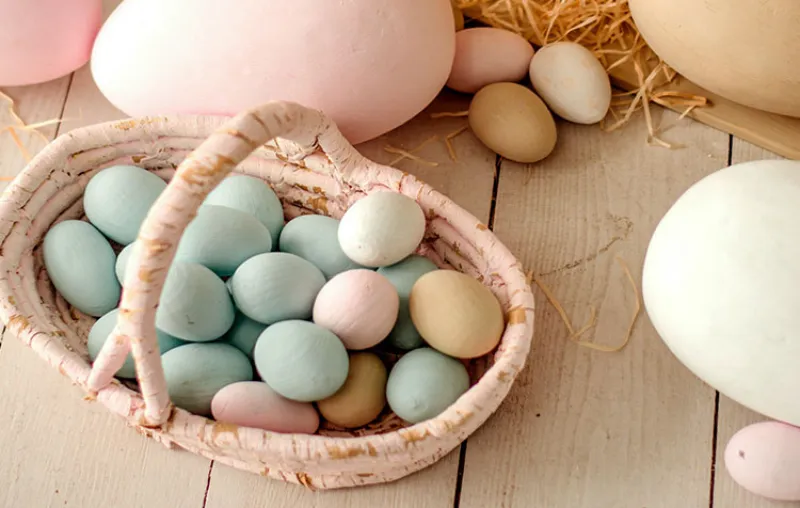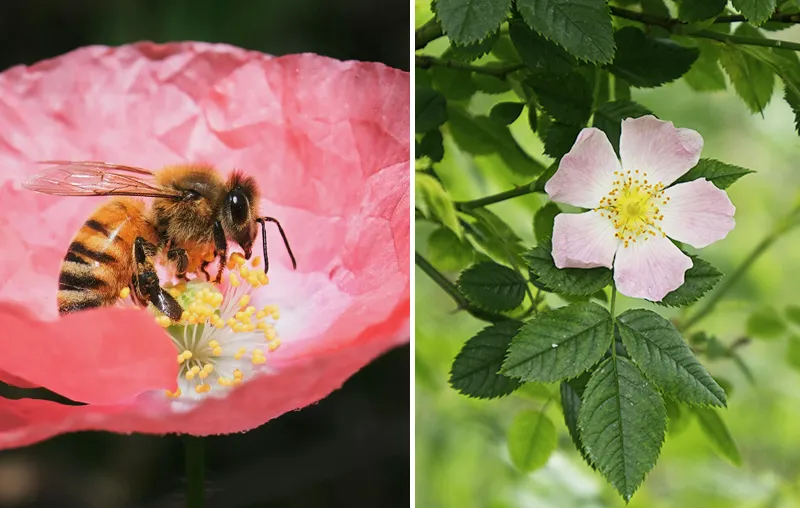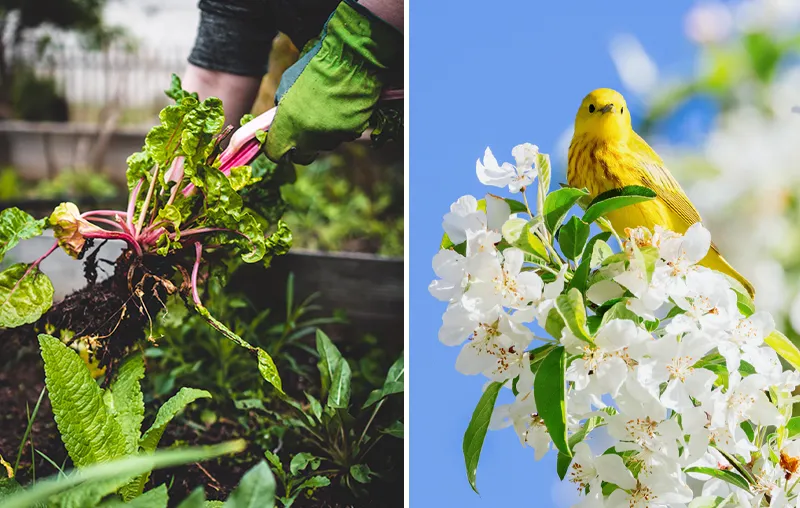Do you dream of a low-maintenance garden that is still beautiful, natural and insect-friendly? Then you've come to the right place! Plucking weeds, mowing the lawn and watering the plants - very few of us have a smile on our face at the thought of this time-consuming gardening work. Especially as time is often in short supply in stressful everyday life anyway.
Accordingly, many people long for a garden that is as easy to maintain as possible - and therefore often turn their green space into a gravel desert that is not only uninteresting to the eye, but also to wildlife and makes the Species Extinction drives us forward. Fortunately, natural gardens are also easy to maintain!
In this article, I will therefore give you the best tips for creating a natural, lively garden without a lot of work. It's the ideal alternative for anyone who wants to do something for garden animals and the environment with little effort. Let's go!
Time wasters: What tasks make people long for low-maintenance gardens?
First of all, we should briefly determine which tasks in the garden actually take up so much time. This can then be used to determine the derive useful, time-saving tips.
I had already mentioned a few things in the introduction - but here I have the List of typical, time-consuming gardening tasks expanded once again:
- Lawn mowing (particularly time-consuming on large areas)
- Weeding (both on the lawn and in the flower beds)
- Irrigation (to protect plants and lawn from drying out and burning)
- Plant protection (e.g. use of pesticides against pests)
- Fertilization (to supply the plants with nutrients)
- Pruning (e.g. for healthy and properly shaped hedges)
- Flower care (e.g. the removal of faded flowers)
- Cleaning (e.g. remove dirt from the terrace and paths)
- New planting and replanting (e.g. seasonal or due to planning errors)
Can you think of any other time wasters from the gardening world? Then write a comment under this article.
Background: Why are low-maintenance gravel gardens so problematic and not the solution?
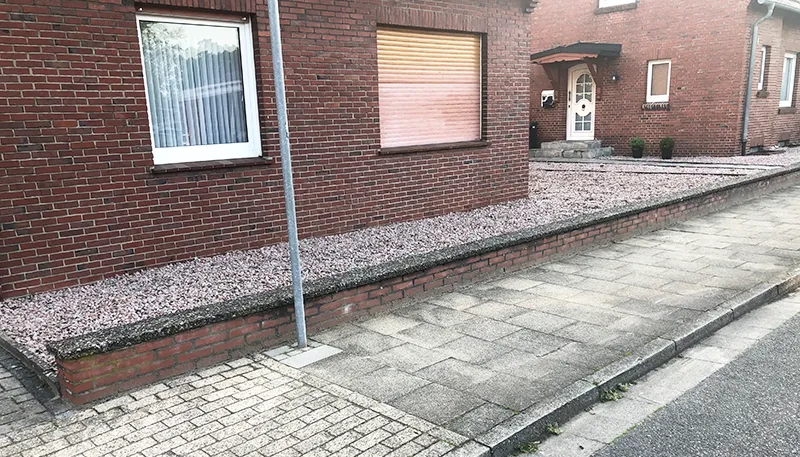
Gravel is being used more and more, especially in German front gardens, because stone deserts simply don't do any work. A "beautiful" or rather ugly example The picture embedded above, which I recently snapped and sent to the Facebook page "Gardens of horror" to draw attention to the associated problems - and alternatives.
Gravel gardens only have the advantage of being low-maintenance. From then on, there are only disadvantages. No colors, no habitat, no animals, destroyed soils, land sealing and a high Flood risk. An absolute disaster for the Biodiversitywhich also puts us humans in danger - and all "gravel gardeners" a lack of Environmental Awareness certified.
Federal states such as Hamburg, Baden-Württemberg and Schleswig-Holstein have Gravel gardens are therefore even prohibited by law.
Good to know: Incidentally, there is a big difference between rock gardens and gravel gardens. Rock gardens are intensively planted - and the stone structures provide shelter for garden animals. In gravel gardens, on the other hand, no life can take place at all, as they consist almost exclusively of gravel and stones and offer no food.
10 tips: How can anyone create a species-rich AND low-maintenance natural garden?
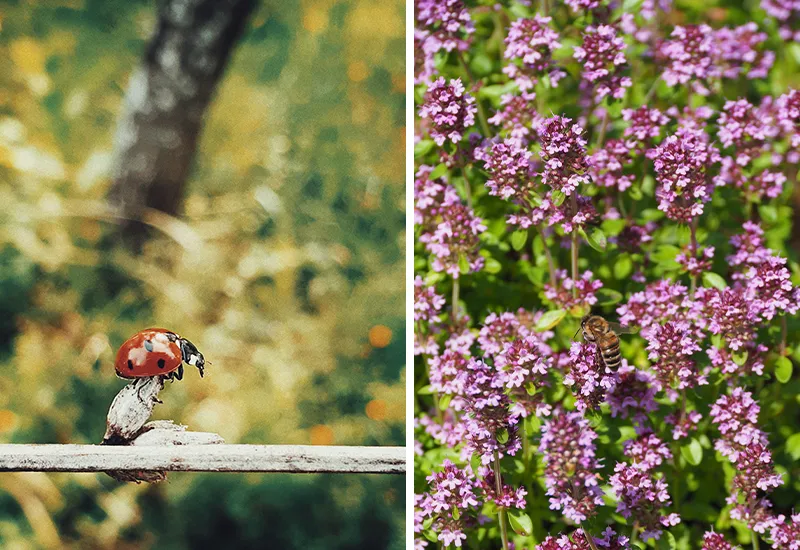
Now for the solution! Simply place a colorful Natural garden instead of a dreary gravel garden. It doesn't need much attention either - but it does give you the chance to Enjoy the buzzing of bees and the chirping of birds from the comfort of your hammock!
Why such a garden requires little maintenance and which tips you can use to put the project into practice - I would like to show you now!
1. plan your low-maintenance garden
So that your work and time expenditure is kept within limits in the future and you not constantly ironing out your own mistakes thorough planning is essential. This preliminary planning is, so to speak, a One-time expensethat all of us should take upon ourselves before we make a Create a garden.
So it's best to simply grab the Site plan and draw paths, flower beds, walls, trees, garden shed etc. as you imagine your garden. Among other things, you should Solar radiation, the Soil conditions and Possible wishes for the future take into account.
2. rely on drought-resistant, perennial, native plants
A low-maintenance garden needs low-maintenance plants! That's why you should opt for trees, shrubs, perennials and flowers that are at home in our latitudes and are easy to care for. Adapted to the local climate are.
Because this makes them more resistant to diseasesgrow without the use of chemical pesticidesneed Less water and also no regular fertilization. Also the garden animal world is naturally totally into native plants - Some insects, butterflies or birds even specialize in a particular plant.
If you want to save yourself stress, you should also choose perennial plants that are just do not die after one growing season and have to be replanted the following year.
Perennial, native and particularly undemanding are, for example, many Wild rose species! Also the Common privet (Ligustrum vulgare), the Common rock pear (Amelanchier ovalis) or the Common meadow yarrow (Achillea millefolium) withstand drought well.
Important: However, you should avoid the common lilac (Syringa vulgaris), as it belongs to the invasive neophytes under the trees which displace other species and even grow on gravel.
3. use mulch, perennials and ground cover to control weeds
There may not be an absolutely weed-free garden - but you can use both soil-promoting Bark and wood chippings mulchas well as numerous ground cover and insect-friendly plants to inhibit growth and Never use weed mats or weedkillers again to have to use it.
Instead, simply leave it to self-propagating, natural, bee-friendly ground cover plants the field. Here are a few of them that you can plant, for example:
- Creeping groundsel (Ajuga reptans)
- Broad-leaved thyme (Thymus pulegioides)
- Woodruff (Galium odoratum)
- Common cat's paw (Antennaria dioica)
- Field forget-me-not (Myosotis arvensis)
- Golden cinquefoil (Potentilla aurea)
4. promote natural pest controllers
Many amateur gardeners spray chemical pesticides against Aphids or even pour salt on Slugsso that they brutally perish. All of this is absolutely superfluous if you take a closer look at the "garden" ecosystem and the natural pest control understands.
In a near-natural garden, for example, there are Ladybugthat eat aphids like an assembly line. The spotted garden helpers will do the work for you if you give them, for example Marigold, cornflower, mint or yarrow offer.
And Snails For example, you can use intensely scented herbs such as Rosemary and thyme keep them away. So encourage beneficial organisms - whether plants or insects.
Tip: You can also find this advice in my article about affordable gardening. Take a look here if you want to save yourself not only garden maintenance but also high costs.
5. reduce your lawn area and mow the lawn less often
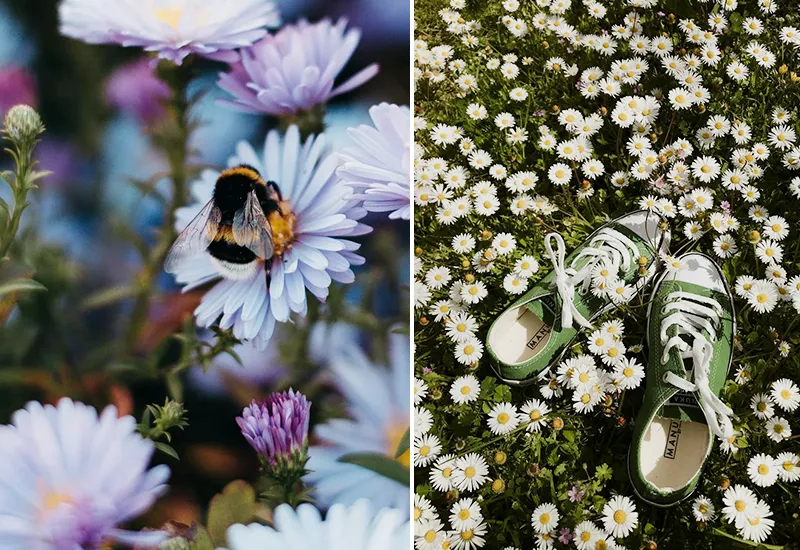
It is self-explanatory: If you have less lawn and more beds where weed growth is naturally suppressed, you also need to mow, fertilize and scarify less! What's more, the perfect, smoothly mown English lawn no longer fits in with our times anyway.
Personally, I only have a small lawn in my garden, which I occasionally mow with a cylinder mower (without a motor). But not as often as you might think. For example, I use the mowing-free May so that the Grow lawn herbs and attract insects can. So it's worthwhile for everyone if you just leave your lawn mower in the shed 😉.
6. create different, near-natural habitats
A species-rich one, Insect-friendly garden lives from its structures! For example, by Pile of leaves lie relaxed and Cairn and Deadwood corners you are doing wild bees, beetles, hedgehogs, lizards and countless other garden animals a great favor.
They will thank you for it, promote the ecological balance in your low-maintenance garden paradise and Keep pests away.
7. plant a robust wild shrub hedge
A wild hedge of native plants should be trimmed from time to time - otherwise you will have basically no work with it. You also create a valuable habitat for insects and birds, which can live in it. Food and protection find
Here are some Robust and bird- and bee-friendly shrubswhich are ideal for your natural hedge:
- Common Hawthorn (Crataegus monogyna)
- Eared Willow (Salix aurita)
- Pike rose (Rosa glauca)
- Sloe (Prunus spinosa)
- Wine rose (Rosa rubiginosa)
8. create a wildflower meadow
More and more amateur gardeners are doing away with huge lawns and simply sowing wildflowers instead. These are extremely species-rich, beautiful and need Almost no care at all. You can simply let the flower meadow grow and only mow it with a scythe from time to time.
However, when selecting the wildflower pack, make sure that the plants are at home in your region are. This makes your low-maintenance garden an even greater gift for insects.
Tip: You may also want to buy a Create a wildflower corner in the garden. I have summarized exactly how this works in the linked blog article.
9. plant shady trees
Large trees are not only a habitat for birds, squirrels and insects, but also provide shade and cooling. In addition they significantly reduce the water requirement in the sustainable garden.
For example, so that a tree can keeps the lawn moist and protects it from sunlightyou just need to plant it in the right place. Pay particular attention to the cardinal points and the right soil.
Tip: Many people are bothered by the fact that some trees make "too much mess" in the form of leaves. You can prevent this potential maintenance effort by, for example, planting the Swedish Whitebeam (Sorbus intermedia) or the Field maple (Acer campestre) plants. Both shed very little foliage and are both insect and bird friendly.
10. water less often and at the right times
Many woody plants and perennials are drought-resistant and must be should only be watered once when planting. Cornelian cherry (Cornus mas), German oak (Quercus robur) or mountain mint (Calamintha sylvatica), for example.
Once the plants have settled in, they will need your attention only when it is really extremely dry is.
And when I do water my plants and the small lawn, I only use collected water. Rainwater from the cistern or rain barrel - and at the times when it makes sense. So late in the evening or early in the morning.
Tip: However, an automatic irrigation system that also uses rainwater and is set to the appropriate times should also be a lot of work for you. For me, however, it doesn't really fit in with the idea of a near-natural garden.
Garden (almost) without maintenance, made easy!
As you can see, a low-maintenance garden is not just a question of conveniencebut also an enormous opportunity to Promote biodiversity. Here and now you've learned the tips and tricks you need to do something about it - without much effort 😉.
And if you want to out of ignorance at some point planted an environmentally unfriendly gravel garden don't worry! It can easily be re-greened, as the embedded video shows.
"The trees, the shrubs, the plants are the ornament and the garment of the earth."
Jean-Jacques Rousseau (more at Garden Quotes)
I hope I have been able to inspire and motivate you with these lines. Do you have any questions, suggestions or further tips for a plant-rich, natural yet low-maintenance garden? Then I look forward to hearing from you in the comments column!
Stay sustainable,

PS: In another blog post I'll show you next, What birds need in the garden. I like to use the tips to enjoy their tweeting every day.



